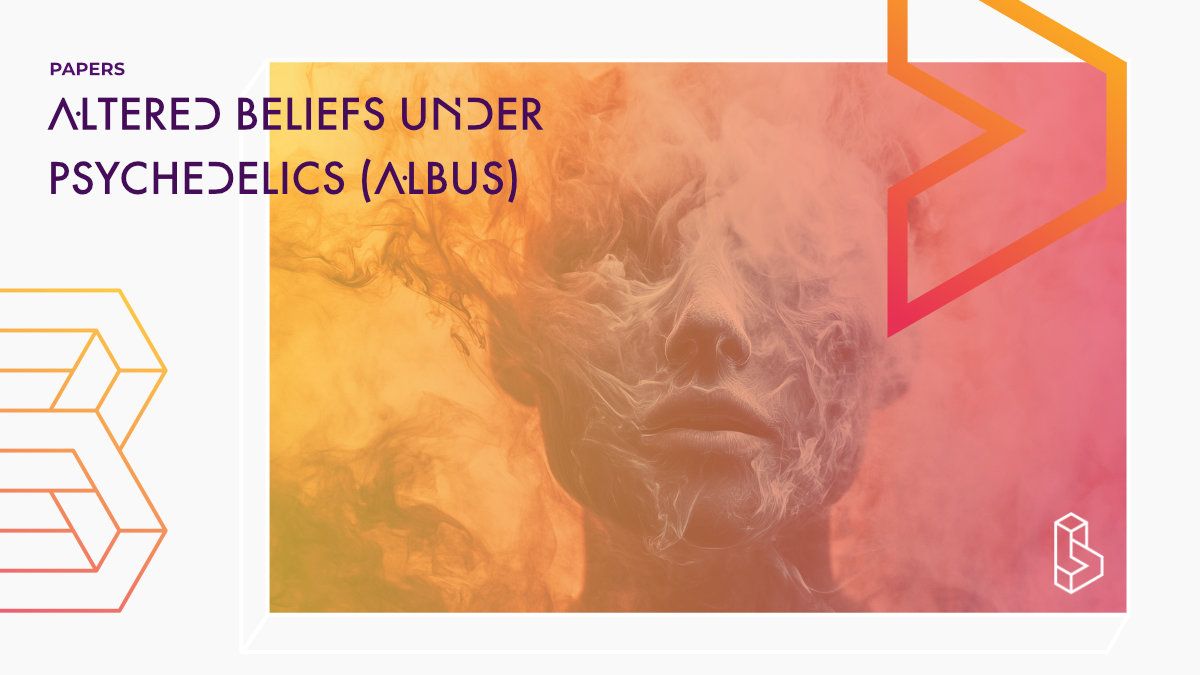This theory-building paper proposes the ALBUS (Altered Beliefs Under Psychedelics) model as an extension of the REBUS hypothesis, suggesting that 5-HT2A receptor activation can lead to both relaxation (REBUS) and strengthening (SEBUS) of beliefs depending on dosage and context. The authors draw parallels between psychedelic states and lucid dreaming, focusing on mechanisms of conscious perception, dreaming, and memory.
Abstract of Altered Beliefs Under Psychedelics (ALBUS)
“How is it that psychedelics so profoundly impact brain and mind? According to the model of “Relaxed Beliefs Under Psychedelics” (REBUS), 5-HT2a agonism is thought to help relax prior expectations, thus making room for new perspectives and patterns. Here, we introduce an alternative (but largely compatible) perspective, proposing that REBUS effects may primarily correspond to a particular (but potentially pivotal) regime of very high levels of 5-HT2a receptor agonism. Depending on both a variety of contextual factors and the specific neural systems being considered, we suggest opposite effects may also occur in which synchronous neural activity becomes more powerful, with accompanying “Strengthened Beliefs Under Psychedelics” (SEBUS) effects. Such SEBUS effects are consistent with the enhanced meaning-making observed in psychedelic therapy (e.g. psychological insight and the noetic quality of mystical experiences), with the imposition of prior expectations on perception (e.g. hallucinations and pareidolia), and with the delusional thinking that sometimes occurs during psychedelic experiences (e.g. apophenia, paranoia, engendering of inaccurate interpretations of events, and potentially false memories). With “Altered Beliefs Under Psychedelics” (ALBUS), we propose that the manifestation of SEBUS vs. REBUS effects may vary across the dose-response curve of 5-HT2a signaling. While we explore a diverse range of sometimes complex models, our basic idea is fundamentally simple: psychedelic experiences can be understood as kinds of waking dream states of varying degrees of lucidity, with similar underlying mechanisms. We further demonstrate the utility of ALBUS by providing neurophenomenological models of psychedelics focusing on mechanisms of conscious perceptual synthesis, dreaming, and episodic memory and mental simulation.”
Authors: Adam Safron, Arthur Juliani, Nicco Reggente, Victoria Klimaj & Matthew W. Johnson
Summary of Altered Beliefs Under Psychedelics (ALBUS)
The article begins by situating the growing interest in psychedelics within a rapidly changing social and legal landscape, arguing that an accurate and detailed framework is essential for both clinical applications and understanding the profound effects these substances have on the brain and mind. The researchers explain that traditional models have often portrayed psychedelics as non-specific amplifiers of experience, yet more recent approaches, such as the Relaxed Beliefs Under Psychedelics (REBUS) model, propose that these substances reduce the influence of entrenched high-level expectations (or priors) in the brain. In contrast, the authors introduce an alternative perspective that posits that under certain conditions, psychedelics may instead strengthen these beliefs—a phenomenon they term Strengthened Beliefs Under Psychedelics (SEBUS).
This duality leads to the formulation of the unifying ALBUS framework (Altered Beliefs Under Psychedelics), which accounts for both the relaxation and the reinforcement of neural representations. The model suggests that the effects of 5-HT2a receptor agonism—a primary action mechanism for many classic psychedelics—vary according to dose, neural system, and contextual factors such as set and setting. Although the focus is on classic psychedelics, the framework holds potential relevance for understanding a broader range of substances, including MDMA, DMT, ayahuasca, ibogaine, ketamine, esketamine, and arketamine, by offering a coherent account of how altered belief dynamics shape conscious experience.
SEBUS + REBUS = ALBUS
Find this paper
On the varieties of conscious experiences: Altered Beliefs Under Psychedelics (ALBUS)
https://doi.org/10.1093/nc/niae038
Open Access | Google Scholar | Backup | 🕊
Cite this paper (APA)

